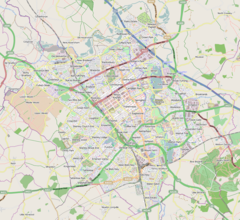
Salhouse is a village and civil parish in the Broads in the English county of Norfolk. It lies south of the River Bure and Salhouse Broad, about 10 kilometres (6.2 mi) north-east of Norwich. The civil parish has an area of 8.96 km2 (3.46 sq mi) and in the 2001 census had a population of 1,462 in 604 households, increasing to 1,486 in 638 households at the 2011 Census. For the purposes of local government, the parish falls within the district of Broadland although areas adjoining the river and broad fall into the executive area of the Broads Authority.

Broughton is a historic village, modern district and civil parish in Milton Keynes, Buckinghamshire, England, situated approximately 3 miles (4.8 km) east of Central Milton Keynes. As of 2020, it is governed by Broughton and Milton Keynes Joint Parish Council, which it shares with the neighboring Milton Keynes parish. Today, Broughton is a large district of (greater) Milton Keynes that has been developed around the original village and that grew substantially during the 2000s and 2010s.

Dagnall is a village in the parish of Edlesborough, in Buckinghamshire, England.
Great Brickhill is a village and civil parish in the unitary authority area of Buckinghamshire, England. It is on the border with the City of Milton Keynes, located 6 miles (9.7 km) south-east of Central Milton Keynes, and 3 miles (4.8 km) in the same direction from Fenny Stratford.

Horton is a hamlet in the parish of Ivinghoe, in Buckinghamshire, England. It is in the civil parish of Slapton.

The Company of Watermen and Lightermen (CWL) is a historic City guild in the City of London. However, unlike the city's other 111 livery companies, CWL does not have a grant of livery. Its meeting rooms are at Waterman's Hall on St Mary at Hill, London.

Toller Porcorum is a village and civil parish in Dorset, England, situated in the Toller valley 10 miles (16 km) northwest of Dorchester. In the 2011 census the civil parish—which also includes the small settlements of Higher and Lower Kingcombe to the north—had a population of 307.
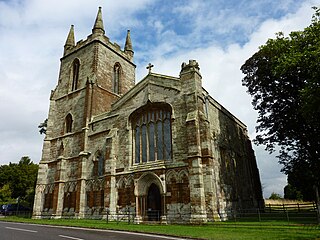
Canons Ashby Priory was an Augustinian priory at Canons Ashby, Northamptonshire, England.

Potterspury is a populous village and civil parish in West Northamptonshire, England. The nearest main town is Milton Keynes, the centre of which is about 7 miles south-east. At the time of the 2011 census, the parish's population was 1,453 people.

Hordle is a village and civil parish in the county of Hampshire, England. It is situated between the Solent coast and the New Forest, and is bordered by the towns of Lymington and New Milton. Like many New Forest parishes Hordle has no village centre. The civil parish includes the hamlets of Tiptoe and Everton as well as part of Downton. The parish was originally much larger; stretching from the New Forest boundary to Hurst Castle.

Ninfield is a village and civil parish in the Wealden District of East Sussex, England. The village is quite linear and centred 4 miles (6.4 km) north of Bexhill-on-Sea where two roads cross: the A269 from Bexhill to Battle and the A271 to Hailsham. The parish covers 2,500 acres (1,010 ha); approximately the northern half of which is in the High Weald AONB.
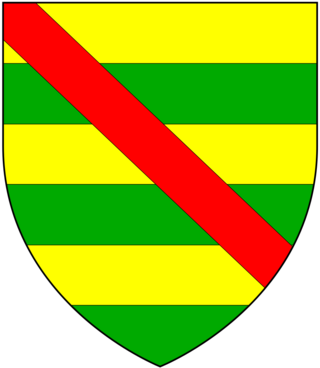
The title of Baron Poynings was created twice in the Peerage of England.

Nunkeeling is a hamlet in the East Riding of Yorkshire, England. It is situated approximately 4 miles (6.4 km) north-west of the town of Hornsea and 3 miles (5 km) south of Beeford.

St Stephens by Launceston Rural is a civil parish in the east of Cornwall, England, United Kingdom. It is in the Registration district of Launceston. The population of the parish in the 2001 census was 312, increasing to 360 and including Dutson at the 2011 census. The former parish of St Stephens by Launceston was abolished in 1894: St Stephens by Launceston Urban became part of the town of Launceston, while St Stephens by Launceston Rural became part of Launceston Rural District.

Furtho is a deserted medieval village and former civil parish, now in the parish of Potterspury, in the West Northamptonshire district, in the ceremonial county of Northamptonshire, England. In 1931 the parish had a population of 25.
Oakgrove is a district of Milton Keynes in Buckinghamshire, England, in the civil parish of Milton Keynes. The district includes a small retail centre consisting of a Waitrose Supermarket, a Metro Bank branch, and other small services units. A large portion of the district is reserved as linear park to accommodate the flood plain of the river Ouzel, a tributary of the river Great Ouse.

Gilston is a village and civil parish in the East Hertfordshire district of Hertfordshire, England. It is located a little over one mile north of the town of Harlow in the neighbouring county of Essex. Together with the nearby village of Eastwick, it forms the parish council of Eastwick and Gilston Parish Council. It is within the Hunsdon ward of East Hertfordshire District Council. At the 2001 Census, the population was 180, and 228 at the 2011 Census.
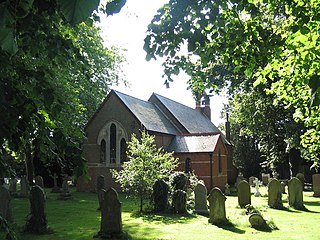
Holbeach Hurn is a small fenland village in the civil parish of Holbeach in the South Holland district of southern Lincolnshire, England. It is 2.5 miles (4.0 km) north-east from Holbeach and 1 mile (1.6 km) north from the A17, and lies at the south-east of Holbeach Marsh.
Sir Richard Fowler (c.1425-1477) was an English administrator.
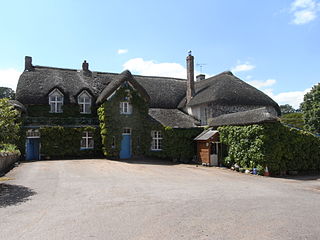
Spencer Combe in the parish of Crediton, Devon, is an historic estate. The grade II listed farmhouse known today as "Spence Combe", the remnant of a former mansion house, is situated 3 miles north-west of the town of Crediton.

